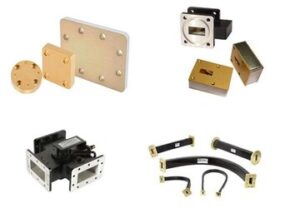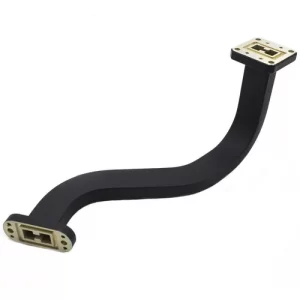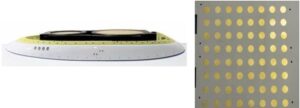Table of Contents
Parabolic (Dish) Antennas
Parabolic or Dish Antennas in Satellite Communications
The parabolic dish antennas play a vital role in satellite communications, particularly in transmitting and receiving signals over vast distances. The general distance between a ground station and a geostationary satellite is about 35,786 kilometers. To ensure that communication remains strong over these distances, a satellite dish must be designed with a high degree of gain. As an example, a 2.4-meter parabolic dish used on the ground in satellite stations provides an acquirement of about 47 dBi at frequencies of 10-12 GHz, quite necessary not to lose signals during transmission. These antennas are designed to handle power outputs from 100 watts to over 1 kilowatt depending on frequency and application for good transmission over such vast distances.
Parabolic Antennas in Radio Astronomy
These are huge parabolic dish antennas designed to capture signals from remote celestial bodies. Probably the most famous was the Arecibo Observatory that had a 305-meter diameter parabolic dish providing about 60 dBi of gain at 2.5 GHz, allowing it to detect radio signals from galaxies billions of light-years away from the observatory. The Arecibo dish was able to receive very weak signals—as low as 0.001 microvolts per meter—and exemplified the capability of parabolic antennas in long-distance communications. Such huge dishes are often fabricated from aluminum mesh or panels, a balancing act between weight and structural integrity, at tens of millions of dollars.
Parabolic Dishes in Ground-to-Air Communications
The standard ground-based 1.8-meter parabolic dish operating at frequencies around 5 GHz has coverage up to 500 kilometers. The beamwidth of the antenna is usually around 3-5 degrees, which enables targeting aircraft with great precision. These antennas typically process 100-200 watts of power and are, thus very efficient in ensuring incessant communication in air traffic communication. The implementation cost for such systems ranges from $20,000 to $50,000, depending on the size of the antenna and mounting structure.
Long-Distance Networks Parabolic Wi-Fi Antennas
Parabolic antennas are also used in the long-distance Wi-Fi networks linking two points through a distance of as far as 15 kilometers. Gains of approximately 30-32 dBi at 2.4 GHz are realized with a parabolic antenna of about 0.6 meters in diameter. For comparison, the best gain that one could expect from a normal omnidirectional Wi-Fi antenna is about 6-8 dBi. The difference therein allows parabolic antennas to keep up an intense signal over distances way longer. These systems’ power output is usually 1 watt, and under diverse environmental variables regarding topography and meteorological conditions, it is feasible to maintain speeds as high as 100 Mbps. Such a setup generally has prices ranging from $150 to $400, whereas the venture projects can have costs as high as $1,000.
Industrial Parabolic Antennas: Cost and Durability
Large parabolic antennas, ranging in diameter from 3 to 10 meters, are used in industry in satellite uplinks, telecommunications, and in military communications. A 3-meter parabolic dish can provide a gain of up to 50 dBi at 12 GHz, which allows efficient data transmission over distances of more than 40,000 km. Systems usually handle power in the range from 500 W up to several kilowatts depending on an application. Their cost can range from basic systems that cost around $50,000 to the really complex installations costing more than $500,000. In fact, a number of these antennas fabricated from industrial materials, especially aluminum, which is highly resistant to corrosion, can have a life-span of more than 30 years.
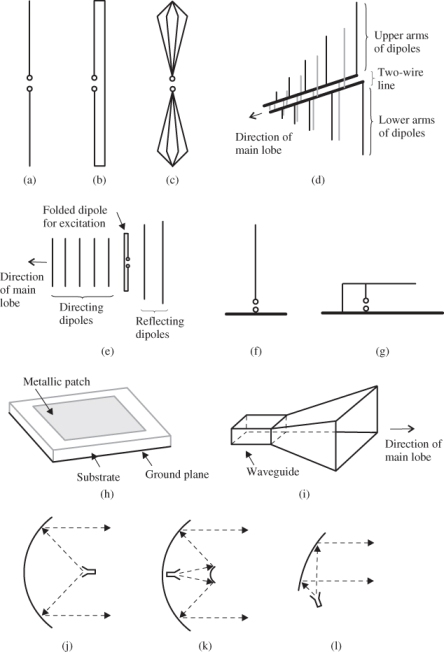
Yagi-Uda Antennas
Yagi-Uda Antennas in Television Reception
A typical Yagi-Uda antenna used for television reception has a boom length of about 1.5 meters, carrying around 10 to 15 elements in the form of directors and reflectors. It operates in the VHF and UHF frequency range; it is generally between 30 MHz and 900 MHz. Using an example of an operating frequency for a Yagi-Uda antenna of 600 MHz with 10 elements, the gain that would be achieved may be approximately about 10 dBi; hence, TV signals from stations could be tapped so far as 80 kilometers away from it. These antennas cost in the range of $30 to $150, depending on the element count and the overall build quality.
Yagi-Uda Antennas in Amateur Radio
The Yagi antennas for 2-meter band communication, that is from 144 to 148 MHz, are around 3 to 5 meters long with 6 to 12 elements. A properly designed and executed Yagi-Uda antenna in this frequency range can have a gain equivalent to around 14 dBi, ensuring clear communication over 800 km with conditions being moderately optimum. Ham radio installations range from a couple of watts to several thousand watts depending on license class and limits placed by regulatory bodies. Amateur radio Yagi-Uda antennas also range in price but are available for around $200-$500 dollars.
Yagi-Uda Antennas in Wi-Fi Applications
The Yagi-Uda antenna designs find application in long-link Wi-Fi connectivity. Long-link essentially means point-to-point communications at distances of up to several kilometers. To give a specific example, for the 2.4 GHz Wi-Fi band, one could have a Yagi-Uda antenna with about 12 elements, exhibiting a gain of 16 dBi. The highest gain allows it to hold a steady connection over 10 kilometers in clear conditions, especially when combined with a similar directional antenna at the receiving end. Because of the regulatory standards, power output in typical Wi-Fi transmitters is limited to 1 watt (30 dBm), but its low power is significantly compensated by the high gain of the Yagi-Uda in putting the signal in a very narrow beam. These antennas are relatively not very expensive, ranging from $50 to $200, thus becoming an extremely cost-effective means of extending Wi-Fi coverage over long distances.
Yagi-Uda Antennas in Cellular Communication
Sometimes, Yagi-Uda antennas are used in cellular communication systems especially in rural or remote areas with poor coverage. A Yagi antenna for 900 MHz GSM band may have a boom length between 1 to 2 meters with 8 to 12 elements providing gain about 12 dBi. This gain is sufficient to improve the strength and quality of the signal for cellular devices up to 30 kilometers away from the nearest cell tower. These antennas are sometimes used in tandem with signal boosters to extend the coverage to even more inaccessible areas. Their cost ranges from $100 to $300 depending on the design and the material used.
Yagi-Uda Antennas in Emergency and Disaster Communication
The Yagi-Uda antenna is very important in emergency communication in disasters, where reliable long-distance communication has to be maintained. For rescue services working within the VHF range of 136-174 MHz, a six- to eight-element Yagi-Uda antenna can realize a gain between 9 and 12 dBi, enabling radio communications out to about 100 kilometers when line-of-sight is accessible. Most of them are lightweight, thus easy to carry; aluminum is always used in their construction to ensure strength with a total weight less than 5 kilograms. Such antennas cost about $250 to $800, depending on the specification and power handling that may be required in case of professional operation in emergencies.
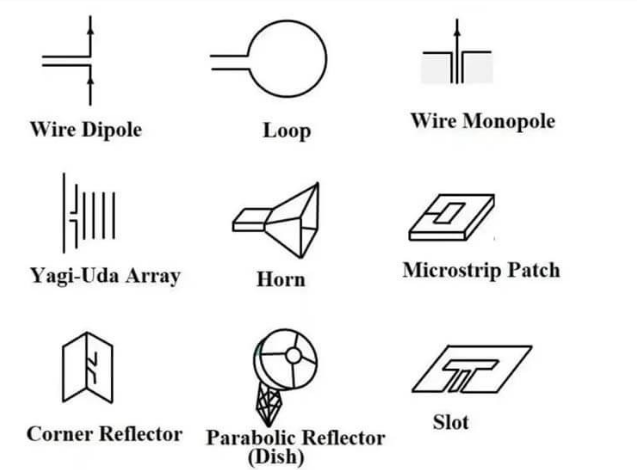
Log-Periodic Antennas
Log-Periodic Antennas in Wideband Communication
A typical log-periodic antenna for application in VHF and UHF applications could cover frequencies as low as 100 MHz and as high as 1 GHz. For example, a log-periodic antenna having a boom length of 2 meters can realize about 6 to 10 dBi gain over this range. In cost, these antennas range between $100 and $500 depending on their range of frequency and construction.
Log-periodic antennas, crucial for EMC testing, require measurement of emissions over a wide range of frequencies. A common log-periodic antenna used in EMC testing will cover frequencies from 200 MHz up to 3 GHz, making it possible to test devices against the wide spectrum of interference. The gain for the common EMC testing log-periodic antenna at lower frequencies, about 200 MHz, is about 6 dBi. It increases with frequency to around 8 dBi at 3 GHz. Log-periodic antennas are also very lightweight; constructed with aluminum or fiberglass, they usually weigh about 2 to 4 kgs. Professional EMC testing antennas cost anywhere between $1,000 and $3,000 depending on their frequency range and construction.
Log-Periodic Antennas in Military Communication
A typical log-periodic antenna, used by the military, could cover frequencies starting from 30 MHz and up to 1 GHz, thus giving flexibility depending on needs and application. Such antennas can be mounted on vehicles or used as fixed installations. Thus, a log-periodic antenna having a boom length of 5 meters and possessing 15 elements can achieve a gain of 7 to 12 dBi depending on operating frequency. In military applications, sometimes it is not the power handling that is critical but up to 1 kW, which log-periodic can handle, providing enough energy to ensure any communication over very long distances. The price for such high-powered antennas ranges from $5,000 to $10,000, depending on the specification.
Log-Periodic Antennas in Amateur Radio
A typical log-periodic antenna for amateur radio applications can cover frequencies from 14 MHz to 30 MHz, which are popular HF bands in use by amateur radio enthusiasts. A log-periodic antenna in this range may have a boom length of 4 to 6 meters, with a gain of about 5 to 7 dBi. While this is comparatively low against more narrowband antennas, such as the Yagi types, it is good enough to serve medium and long-range transmissions at power outputs up to 100 watts to 1,500 watts, depending on licensing. The prices start at $400 for a modest amateur radio log-periodic antenna and go up to $1,200.
Log-Periodic Antennas in Ground-Based Radar Systems
A log-periodic antenna applied to a radar system may cover frequencies within 50 MHz to 1 GHz, allowing the system to scan targets within wide areas. A radar log-periodic antenna with a 3-meter boom length can achieve a gain of about 8 dBi, sufficient enough to give substantial directivity for focusing the radar’s signal while being flexible within various frequencies. Log-periodic antennas are normally designed for power up to 500 watts and shall be adequate for medium-range radar applications. Log-periodic antennas designed for use in radar start at around $2,000 and go up to $7,000 depending on frequency range and power handling.
Rhombic Antennas
Rhombic Antennas in HF Communication
The frequency range for a rhombic antenna is from 3 MHz to 30 MHz, which best fits the requirements of long-distance shortwave radio communications. A standard rhombic antenna with a leg length of about 100 to 200 meters can realize a gain of approximately 12 to 20 dBi, depending on the design and operating frequency. These antennas are directional, thus enabling focused transmission, something very important when communicating over distances of 2,000 to 4,000 kilometers. The material cost of rhombic antenna construction is usually on the low side, and costs range within the bracket of $500-$2,000, largely dependent on size and the supporting structures that are needed.
Military Applications of the Rhombic Antennas
Military-type rhombic antennas can have leg lengths from 300 up to 500 meters, and they are usually installed at heights ranging from 30 to 50 meters above the earth’s surface. The gain of the biggest antennas reaches values as high as 24 dBi, good for effective communication over distances of 5,000 kilometers or more. Typical power handling for these antennas ranges from 1 kilowatt to 10 kilowatts, depending on mission requirements. The cost of establishing a military rhombic antenna system—complete with supporting towers and infrastructure—can reach as high as $50,000 to $150,000, considering the magnitude and technicality of the installation.
Rhombic Antennas in International Broadcasting
The sending of signals across continents is performed with the use of rhombic antennas in international broadcasting. A rhombic antenna, with one leg 150 meters in length and oriented to broadcast in the range of 10 to 20 MHz, can send clear signals to audiences more than 4,000 kilometers away. These broadcasts are usually run with 100 kilowatts to 500 kilowatts power output for strong signal propagation over great distances. The cost for an international broadcasting rhombic antenna setup, including the high-power transmitter, will cost between $200,000 and $500,000, depending on the infrastructure needed.
Rhombic Antennas in Scientific Research
In ionospheric studies, scientists investigate radio wave propagation over very long distances using rhombic antennas. A typical rhombic antenna used in this area might be 200 meters, with a gain of about 16 to 20 dBi at frequencies of 5 MHz to 25 MHz. Such antennas can transmit signals over 3,000 to 6,000 kilometers and are appropriate for experiments that involve the reflections of radio waves off the ionosphere. The power output, in scientific applications, generally ranges from 500 watts to 5 kilowatts, depending on the requirement of the specific research. Moreover, establishing such antennas for research typically falls within the bracket of $10,000 and $50,000, besides the allied research equipment.
Maritime Communication Rhombic Antennas
A rhombic antenna of 100 to 150 meters leg length may service a maritime antenna and provide about 14 to 18 dBi gain. These antennas usually mount on large ships or coastal communication stations for communicating out to distances of 2,000 to 3,000 kilometers. Power output into these systems usually ranges from 1 kilowatt to 10 kilowatts to ensure dependable communications, especially during poor weather conditions. The cost of a rhombic antenna system for marine use, with transmitter and installed on a ship or on a coastal station, running between $20,000 to $100,000, depending on the size of the antenna and the conditions under which it is installed.
Dipole Antennas (with repeaters)
A half-wave dipole antenna standard specimen operates at 14 MHz (20-meter band) with a length of approximately 10 meters and realizes an approximate gain of about 2.15 dBi. Such dipoles are good for communication at distances from 500 to 2,000 kilometers with power as low as 100 to 500 watts. In amateur radio, such antennas are simple and cheap to make from $50 up to $150, with regard to what materials are used, like copper wires and insulators. Such antennas, while placed approximately 10 meters above ground level, will propagate the signal effectively by reflection off the ionosphere.
VHF/UHF Communications Using Repeater with Dipole Antennas
One can establish long-distance communications on VHF/UHF with a dipole antenna when used along with a repeater. A simple dipole antenna based repeater operating at 144 MHz, or the 2-meter band, will have a range of up to 100 kilometers. In this configuration, the gain of the dipole is still in the region of 2.15 dBi, but because the repeater is amplifying the signal normally by 10 to 20 dB, this extends the over-the-air communication range accordingly. The power output of the dipole is normally in the region of 50 to 100 watts, whereas the repeater amplifies this to 500 watts or more. Repeaters are very often mounted on towers or high locations to help with line-of-sight communications. These cost anywhere between $1,000 to $5,000 depending on the power output and the coverage area.
Urban Setting: Dipole Antennas with Repeaters
In urban areas, due to the presence of buildings and other concrete jungles which effectively bring the wave propagation to a grinding halt, dipole antennas need to be installed along with repeaters in order to effect proper communication. An example would be a dipole antenna operating within the UHF frequency range, where the use of a repeater could sustain a range of communications from 10 to 50 kilometers. The normal length of a dipole antenna operating at such a frequency range would be about 30-40 cm but still maintains a gain of around 2 dBi. It has a repeater with typical gain of around 20 to 30 dB to compensate for the loss caused by the buildings and other obstacles. For the repeater system of the dipole antenna in an urban area, the total estimated cost may lie in between $2,000 to $10,000 based on the specifications of the repeater during installation time and based on the complexity.
Dipole Antennas with Repeaters in Emergency Communications
In emergency communications, dipole antennas operating in conjunction with repeaters ensure that communications are over long distances and uninterrupted. A normal dipole antenna, which is usually applied in emergency services at 150 MHz frequency, covers approximately 50 kilometers when combined with a repeater system. The power output normally ranges from 100 to 500 watts, while the repeater amplifies the signal by 20 dB or above. This setup ensures reliable communication between emergency teams in disaster-stricken areas where other communication infrastructures may be compromised. The cost of setting up an emergency communication system with dipole antennas and repeaters can range from $5,000 to $20,000, contingent on the area of coverage and power requirement.
HF Communication Repeaters with Dipole Antennas
Dipole antennas can be used in concert with repeaters in HF communication to give global communication coverages. An ordinary HF dipole antenna, at an operational frequency of 7 MHz in the 40-meter band, is about 20 meters long and can reach distances up to 3,000 kilometers when used in standard ionospheric propagation. On input with a repeater, the strength of the signal increases manifold, thus allowing global communication with minimal signal loss. The most commonly used output power in HF communications ranges from 100 W to 1 kW, where the repeater amplifies the signal by 20-30 dB. The cost for an HF dipole antenna together with repeater systems costs in the range of $10,000 to $50,000, depending on the size of the antenna, repeater power, and complexity of installation.

